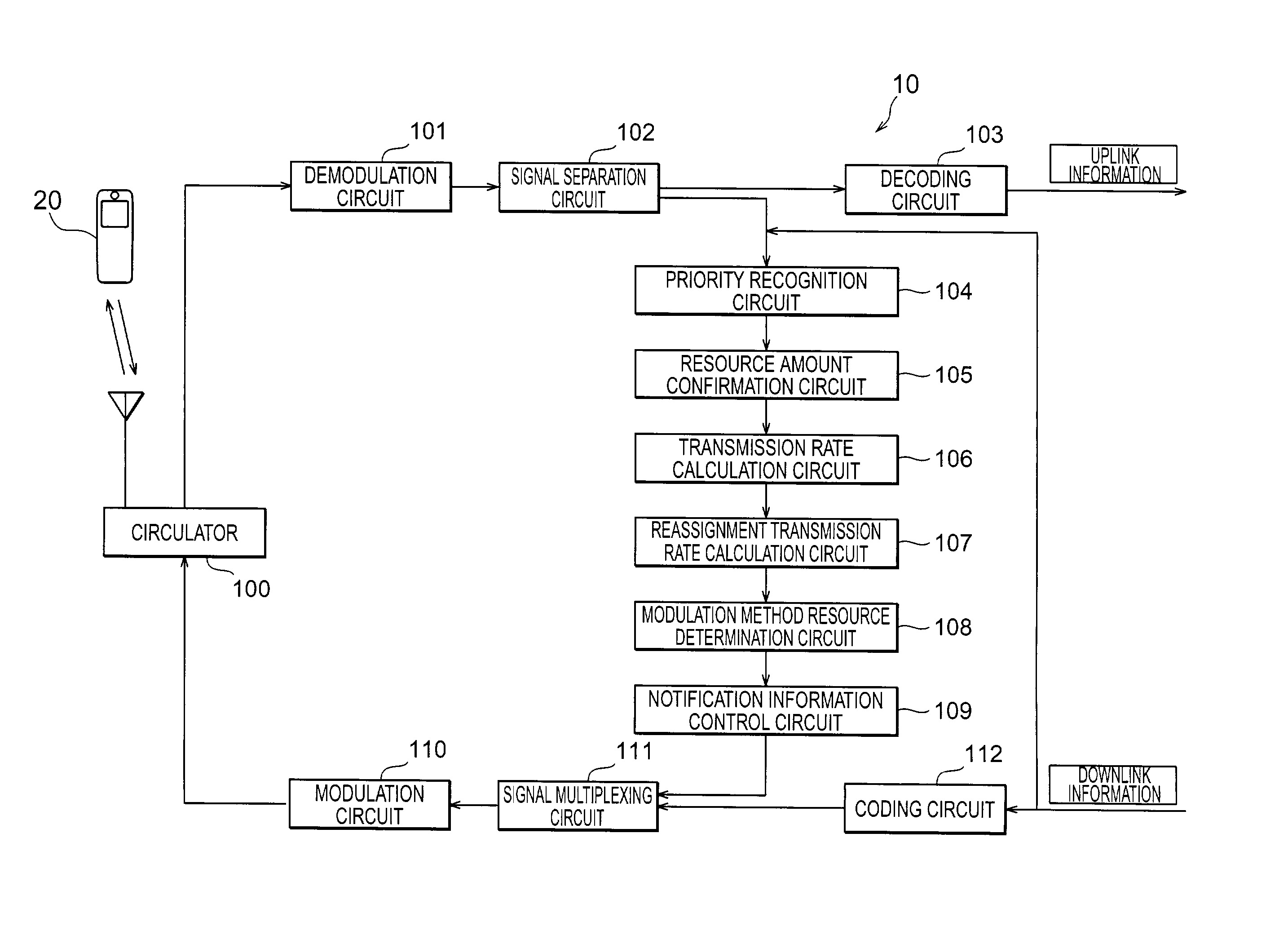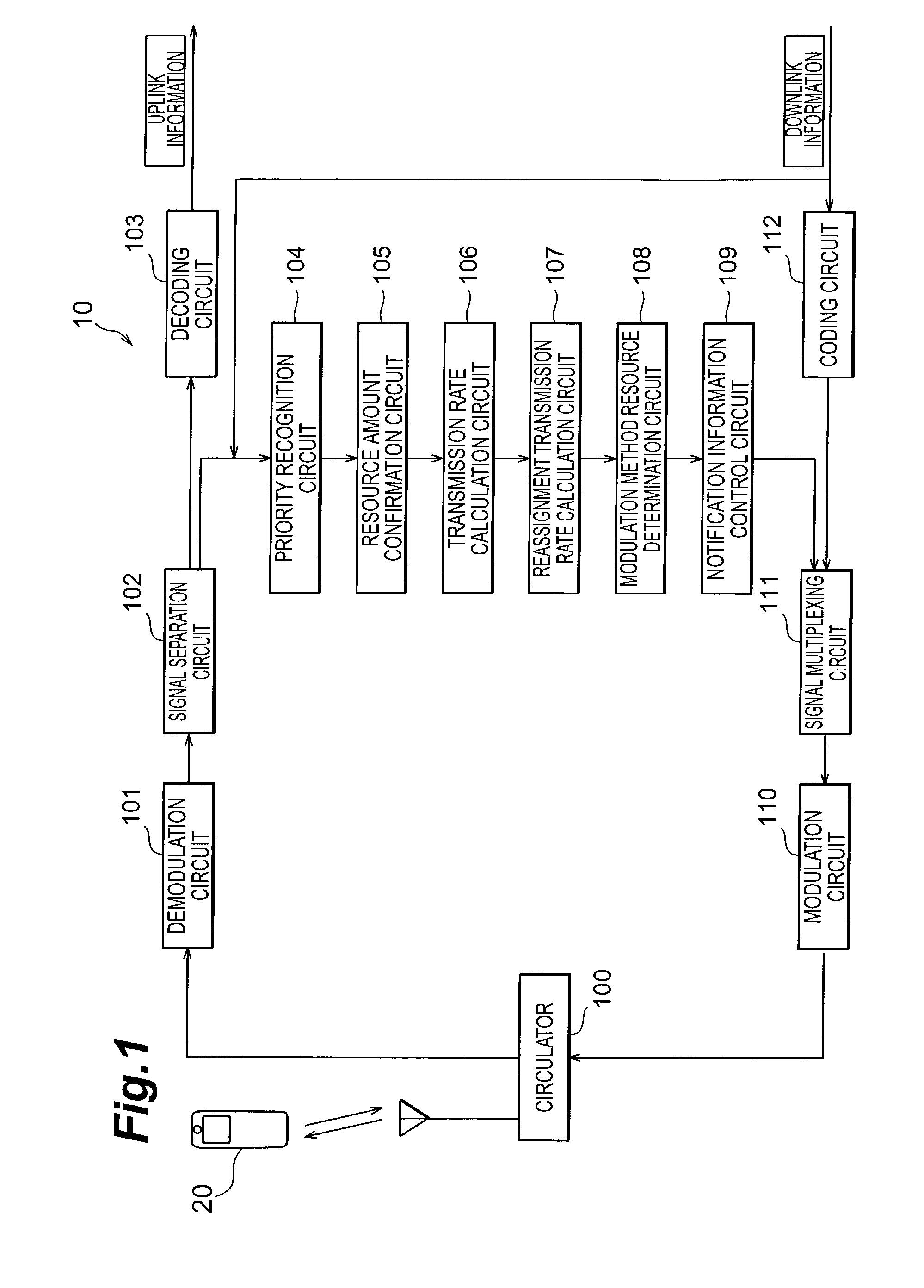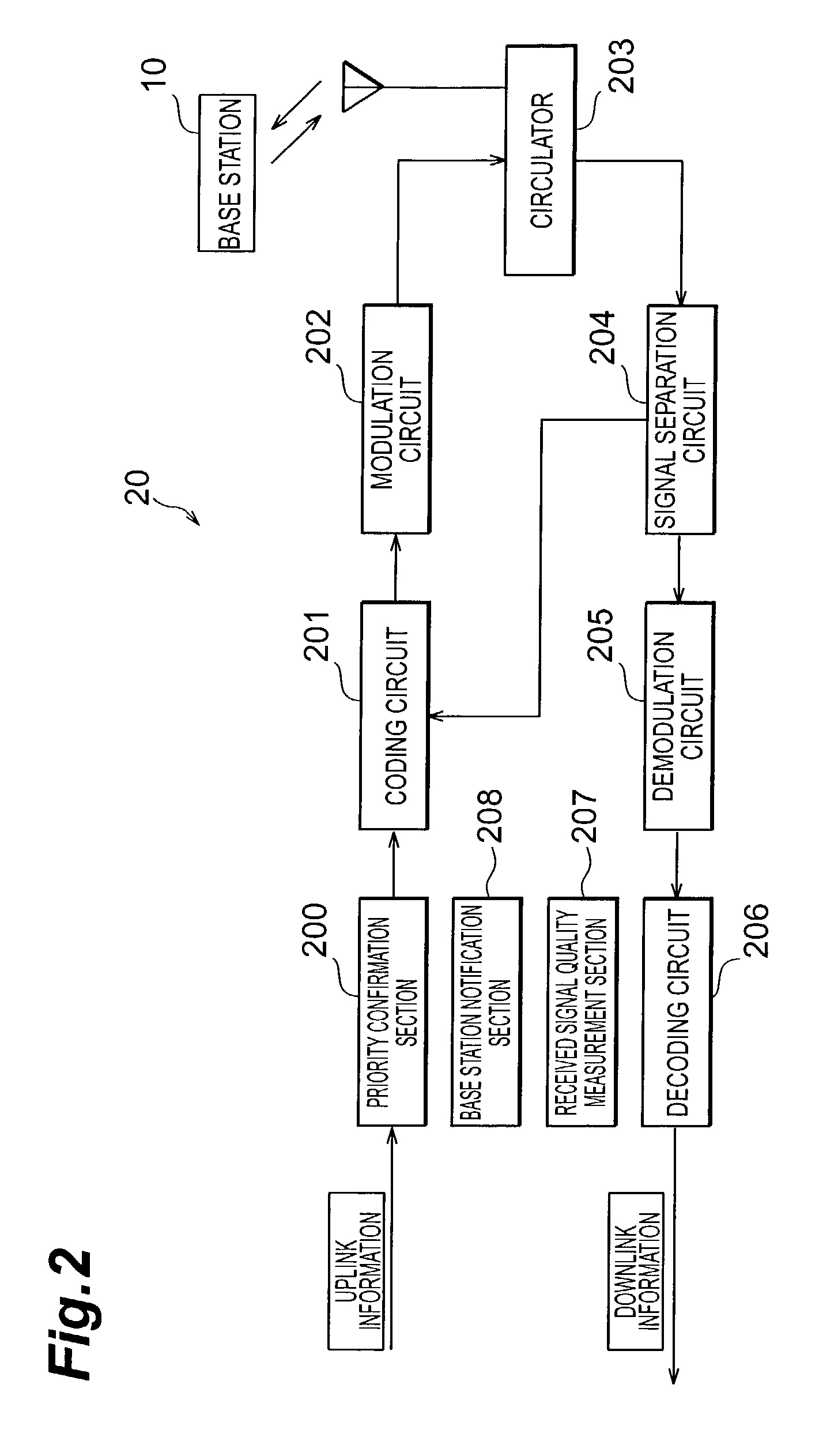Resource control method, mobile communication system, base station and mobile station
a technology of mobile communication system and resource control method, which is applied in the direction of network traffic/resource management, wireless commuication services, electrical equipment, etc., can solve the problems of large loss of communication desired to be continued, difficulty in ensuring the quality of service of a network, and unfairness among users of the same service class. achieve the effect of keeping fairness of a servi
- Summary
- Abstract
- Description
- Claims
- Application Information
AI Technical Summary
Benefits of technology
Problems solved by technology
Method used
Image
Examples
Embodiment Construction
[0082]Embodiments of the present invention will be described with reference to the accompanying drawings below. As shown in FIGS. 5A and 5C, a mobile communication system supposed in this embodiment is the one constituted by comprising a base station 10 and mobile stations 20 (hereinafter referred to as MS) located within a cell controlled by the base station 10, which communicates between the base station 10 and each mobile station 20. Note that a portable terminal such as a portable phone and a mobile terminal corresponds to the mobile station 20.
[0083]A constitutional view illustrating a constitution example of the base station 10 is shown in FIG. 1. The base station 10 comprises a circulator 100; a demodulation circuit 101; a signal separation circuit 102; a priority recognition circuit 104 for recognizing a priority (service class) and the present communication quality (for example, a transmission rate and the like) concerning the mobile station 20 that is a communication partn...
PUM
 Login to View More
Login to View More Abstract
Description
Claims
Application Information
 Login to View More
Login to View More - R&D
- Intellectual Property
- Life Sciences
- Materials
- Tech Scout
- Unparalleled Data Quality
- Higher Quality Content
- 60% Fewer Hallucinations
Browse by: Latest US Patents, China's latest patents, Technical Efficacy Thesaurus, Application Domain, Technology Topic, Popular Technical Reports.
© 2025 PatSnap. All rights reserved.Legal|Privacy policy|Modern Slavery Act Transparency Statement|Sitemap|About US| Contact US: help@patsnap.com



